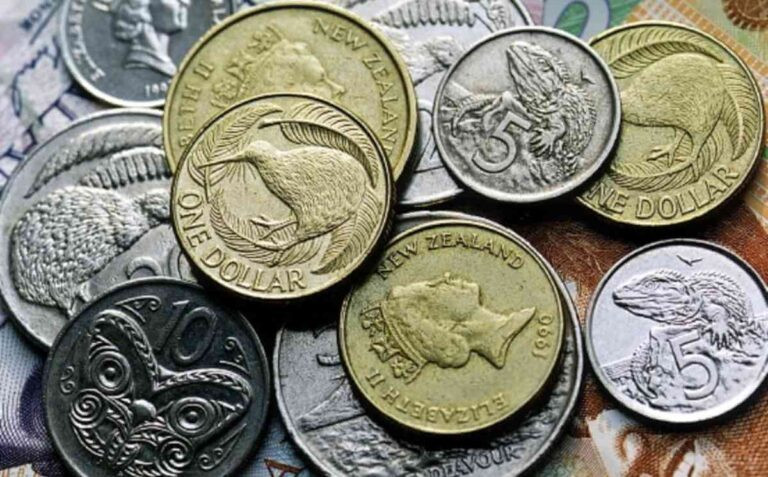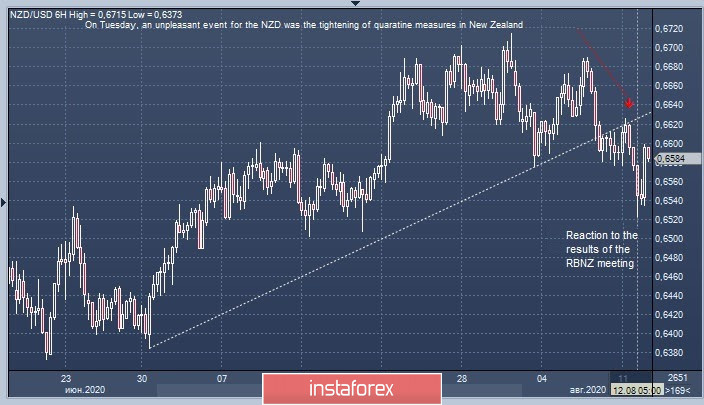
Analysts say that the New Zealand dollar may collapse under the pressure of negative factors. They fear the sharp collapse of the "Kiwi", which has recently stumbled on the verge of collapse due to new COVID-19 outbreaks.
It should be noted that on Tuesday, August 11, four cases of COVID-19 were recorded in New Zealand, after 102 quiet days of being "coronavirus-free". This was extremely unpleasant news for the NZD, who risked losing its previous conquests. Nevertheless, the experts were not that alarmed so much by the appearance of the infected as by the authorities' response. They imposed so-called third tier restrictions in Auckland, one of the largest cities in the country. The third level of danger involves the closure of institutions that accommodate large numbers of people (cinemas, markets, swimming pools, fitness centers and food courts). At the same time, restrictions are imposed on interregional movements.
This measure will be valid for about three days, but analysts say that its consequences for the NZD/USD pair may be destructive. Earlier, the New Zealand currency reacted very painfully to the next introduction of quarantine measures in the country, falling from the previous heights - around the level of 0.6700 to the level of 0.6640. Yesterday's decision of the Reserve Bank of New Zealand (RBNZ) on the interest rate" finished off " the NZD.

It can be recalled that on Wednesday, August 12, the New Zealand regulator left the key rate at an extremely low level of 0.25%, but significantly expanded the large-scale asset purchase program (LSAP) at the same time. Earlier, RBNZ operated with a volume of 60 billion New Zealand dollars, and now has increased the purchase program to 100 billion New Zealand dollars ($ 65.39 billion). This decision had an extremely negative impact on the dynamics of the NZD: it slipped to the critical levels of 0.6535-0.6540. Later, it managed to rise slightly, but is far from the previously conquered peaks. On Thursday, August 13, the NZD/USD pair began trading in the range of 0.6559-0.6560, and later tested the level of 0.6565.
The decision of the RBNZ surprised and alarmed the market, as the players expected the asset repurchase program to increase to only NZ $ 75 billion. Keeping the rate at 0.25% was not surprising, in contrast to the expansion of the LCP to 100 billion NZD. It should be noted that the implementation of the asset purchase program is planned until June 2022, which caused another blow to the national currency.
In addition, the regulator is ready to resort to strengthening incentive measures if the situation worsens. The RBNZ's arsenal includes additional monetary instruments such as negative interest rates, concessional bank financing and the acquisition of foreign assets.
According to CitiFX analysts, the NZD is currently one of the beneficiaries of the recovery in economic activity in the region. However, this fact is not too happy for the monetary authorities of New Zealand: the strengthening of the national currency is not included in their plans. At the same time, experts record successful attempts to strengthen the indicated currency, which has almost completely won back the losses since the quarantine was introduced.
Experts emphasize that the current situation turned out to be extremely negative for the "bulls" of NZD. To date, they have not managed to overcome the short-term support level gained earlier. Analysts do not exclude the possibility of a deeper correction of the NZD/USD pair in the near future. According to experts, the increase in the quantitative easing (QE) program is a rather aggressive measure for the New Zealand economy. This will be the first step towards a long-term downward trend in the Kiwi.
 English
English 
 Русский
Русский Bahasa Indonesia
Bahasa Indonesia Bahasa Malay
Bahasa Malay ไทย
ไทย Español
Español Deutsch
Deutsch Български
Български Français
Français Tiếng Việt
Tiếng Việt 中文
中文 বাংলা
বাংলা हिन्दी
हिन्दी Čeština
Čeština Українська
Українська Română
Română

